Hornby School Students and Community Help Restore Helliwell’s Coastal Bluff Meadows
By Chris Junck, Taylor’s Checkerspot Butterfly Recovery Project Team
In 2015 restoration work began to reduce habitat and biodiversity loss in Helliwell Provincial Park’s coastal bluff meadows. Habitat restoration in the area includes selective removal of young Douglas-fir trees and seedlings, weeding out invasive plants, replanting and seeding with native meadow plants, and the reintroduction of Taylor’s checkerspot caterpillars raised by Wildlife Preservation Canada staff at the Greater Vancouver Zoo.
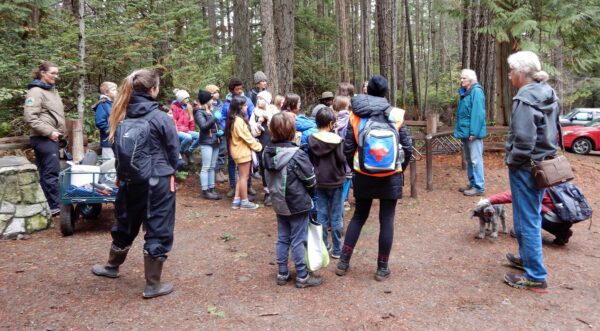
Photo by Bonnie Zand.
In mid-October, 19 students from Hornby Island’s Community School joined school staff and parents, Hornby Island Natural History Centre stewards, and a team of biologists from BC Parks and the BC Conservation Foundation in Helliwell Provincial Park. The group removed hundreds of weeds and replaced them with 950 native plant plugs. The planted plugs included two types of grass (California brome and Roemer’s fescue), field chickweed and woolly sunflowers that were grown from seeds and nurtured through the hot summer by Hornby Island Natural History Centre volunteers.
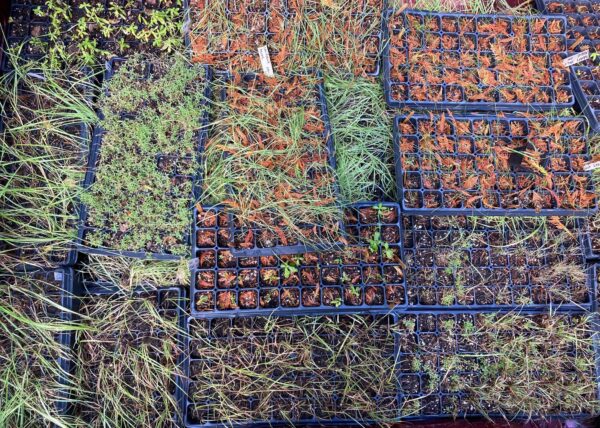
Hornby Island Natural History Centre volunteers grew 950 native plant plugs for the coastal meadow restoration project. Photo by Erica McClaren.
It was the sixth consecutive year that the school participated in the coastal meadow habitat restoration project in Helliwell Provincial Park. The students had great attitudes, and enthusiastically worked at the planting and weeding. An excited student said, “I’ve come to do this three times. I want to come back to this planting patch next summer and see if there are butterflies on our plants!”
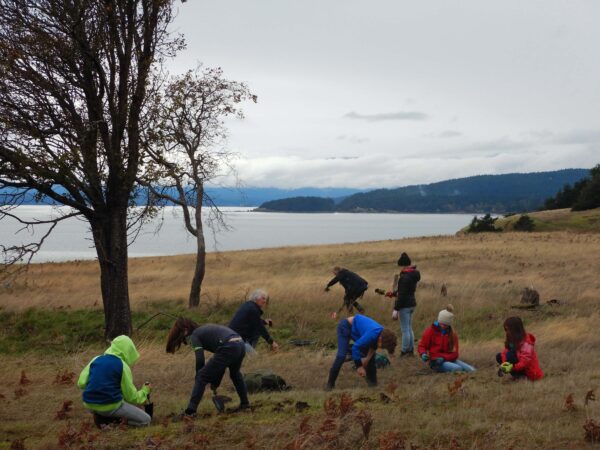
Photo by Bonnie Zand.
The annual plantings by students, volunteers, BC Parks staff and contractors are making a noticeable difference.
“It is getting harder to find bare sites that need plants. These sites are really coming along,” said BC Parks conservation specialist Erica McClaren.
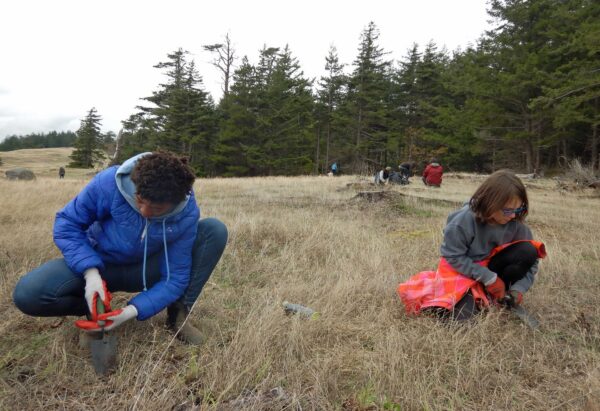
Photo by Bonnie Zand.
Neil Wilson of the Hornby Island Natural History Centre added, “Our community as a whole has contributed to the restoration by leaving bikes at the trailhead, walking only on delineated pathways, keeping dogs leashed, and providing essential support services.”
The Taylor’s Checkerspot Butterfly Recovery Project Team and BC Parks thank the Cowichan Tribes, Halalt, Homalco, K’ómoks, Lake Cowichan, Lyackson, Penalakut, Qualicum, Snaw’Naw’As, Stz’uminus, Tla’amin, We Wai Kai, and We Wai Kum First Nations, for allowing us to restore ecosystems in their traditional territories. In addition to Hornby Island Natural History Centre members, the Community School students, staff and parents, several local volunteers and Satinflower Nurseries also contributed to the success of the habitat restoration project.
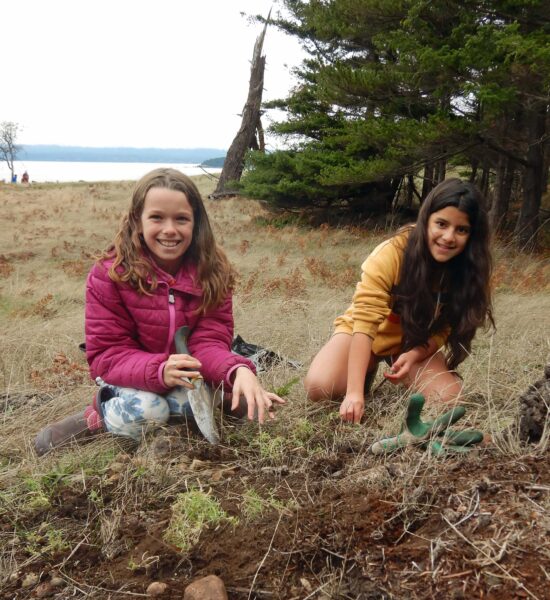
Photo by Bonnie Zand.